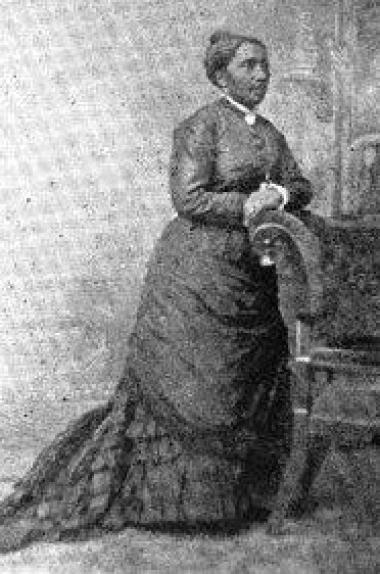
In 1854, as a young woman in New York City, Elizabeth Jennings (1827 [some sources say 1830]–1901 [some sources say 1905]), later Elizabeth Jennings Graham, did what Rosa Parks would do one-hundred years later—she defied the public transportation's segregation practices and won a legal battle in the City of New York.
The incident began on a hot July Sunday morning when the schoolteacher was waiting for transportation to go to church, where she played the organ. She boarded a Third Avenue Railroad Company horsecar at Pearl and Chatham Streets in lower Manhattan, only to be ordered by the conductor to get off the car and wait for one that was marked for "colored persons." Knowing that those marked vehicles were rare and that black residents were expected to walk, Elizabeth defied the conductor's orders and stayed on the horsecar, at which point the conductor tried to force her off the car. A February 1855 edition of the New York Tribune described the incident: "The conductor undertook to get her off, first alleging the car was full, when that was shown to be false. He pretended the other passengers were displeased at her presence. But [when] she insisted on her rights, he took hold of her by force to expel her. She resisted. The conductor got her down on the platform, jammed her bonnet, soiled her dress and injured her person. Quite a crowd gathered. But she effectually resisted. Finally, after the car had gone on further, with the aid of a policeman they succeeded in removing her."
The next day an enraged black community held a rally at Elizabeth's church, and shortly thereafter Elizabeth Jennings, represented by Chester A. Arthur, a twenty-four-year-old junior partner at Culver, Parker, and Arthur, took her case to court. (Arthur would later become 21st President of the United States.) She sued the Third Avenue Railroad Company, the conductor, and the driver of the horsecar. In 1855, she won the lawsuit and was awarded damages by Judge Rockwell of the Brooklyn Circuit Court, who ruled that "Colored persons if sober, well behaved and free from disease, had the same rights as others and could neither be excluded by the rules of the company, nor by force or violence."
Elizabeth's persistence paid off, albeit slowly. It took twenty years before all streetcars in New York City were desegregated. In 1873, with passage of the New York State Civil Rights Act, all transit lines were integrated by law, disallowing discrimination on public transportation in the city. (Some sources say the city desegregated all public transportation by 1861.)
Following the decision in Jennings v. Third Avenue Railroad Co., the Third Avenue Railroad Company desegregated all its cars, but other transportation companies continued their company segregation practices. Elizabeth's father, Thomas Jennings, a successful businessman and influential member of the city's black community, formed the Legal Rights Association to challenge the continued segregation practices in public transportation. His organization, which used public-opinion campaigns, lobbying, civil disobedience, and litigation, became a model for later civil rights organizations.
